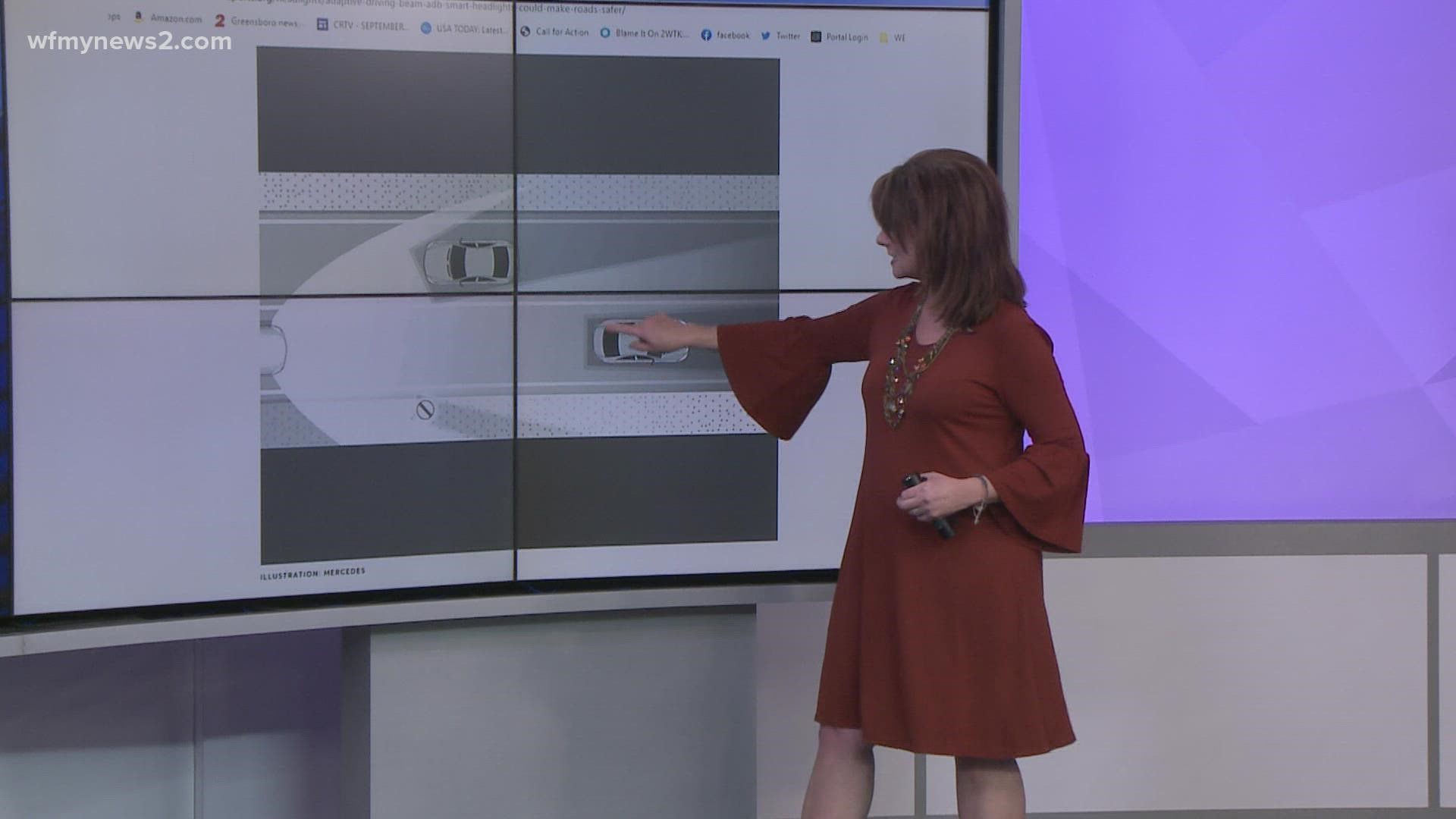GREENSBORO, N.C. — Blinded by the light. It’s a song, but it’s an everyday occurrence for many drivers. Headlights from oncoming drivers or the headlights in the rear-view mirror nearly blind you.
Wouldn't it be nice if the lights helped the driver see the road better and didn't blind you?
We're one step closer to that happening thanks to a new ruling by the National Highway Traffic Safety Administration and Adaptive Driving Beam headlights.
From NHTSA:
Adaptive Driving Beam headlight systems, or ADB, use automatic headlight beam switching technology to shine less light on occupied areas of the road and more light on unoccupied areas. The adaptive beam is particularly useful for distance illumination of pedestrians, animals, and objects without reducing the visibility of drivers in other vehicles.
Consumer Reports has an illustration from Mercedes showing how ADB technology stops the light from hitting the oncoming driver's eyes, but it keeps the light on the road and down, so they can see the road at a longer distance. This kind of technology is used in the UK right now. Some of the lights have flaps that come down inside the lights to change the direction.
It will take some time for the technology to trickle down to all new cars, but at least it's on its way. In the meantime, Consumer Reports wants you to be diligent to turn your high-beams on when on-coming drivers are not coming your way and you’re not right behind another driver.
According to CR if you’re driving at 60 mph and you see something in the road, it takes two seconds to react. In that time, you’ve traveled 170 feet. Once you apply the brake, you travel another 131 feet before you can stop. Headlights that allow you to see farther out, help you to drive safer.
Consumer Reports said brighter isn't necessarily better, it's the distance the lights cover. The first step is to make sure your lights are aligned correctly -- and that's best done by a mechanic.

